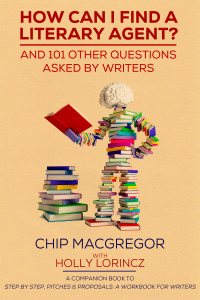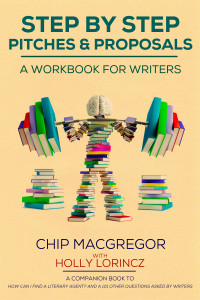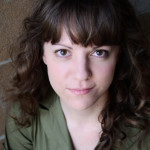- Agents
- Author News, Deals
- Awards
- Bad Poetry
- Blog News
- Books
- Career
- CBA
- Collaborating and Ghosting
- Conferences
- Current Affairs
- Deep Thoughts
- Favorite Books
- Featured
- Film
- Marketing and Platforms
- Proposals
- Publishing
- Questions from Beginners
- Quick Tips
- Religion
- Resources for Writing
- Self-Publishing
- Social Media Critique
- The Business of Writing
- The Writing Craft
- Thursdays with Amanda
- Trends
- Uncategorized
- Web/Tech
Category : The Writing Craft
-
Continue Reading "Literary Devices for the Real World: Foreshadowing"
Literary Devices for the Real World: Foreshadowing
Welcome to week three of Literary Devices for the Real World! I’m talking today about one of those classic high school literary devices teachers and textbooks loved to point out, foreshadowing.
You may remember learning about foreshadowing from poems like The Highwayman and short stories such as The Lottery or The Tell-Tale Heart, and if so, it might be that you associate foreshadowing chiefly with melodrama and literary horror. The idea that foreshadowing = foreboding, however, or that foreshadowing is a tool of literary writers only is a far too narrow understanding of foreshadowing and its function in storytelling. The fact is that foreshadowing shows up everywhere, in all types of stories, literary or otherwise, chick lit or mystery. It can show up in any genre, adding dimension, helping to catch and hold the reader’s interest, and helping to establish or reinforce the tone of a story. Foreshadowing is a device storytellers instinctively use to heighten their audience’s emotional response to their story— even if you don’t specifically set out to include it, you most likely will do so without a conscious effort. Recognizing the variety of techniques for accomplishing foreshadowing and knowing the ways it can strengthen or heighten your story can help ensure that you’re maximizing its potential to enhance your reader’s experience of your story.
Let’s first take a look at some foreshadowing basics. Foreshadowing, by definition, is an allusion to or hint at something yet to happen in a story. It can be subtle, such as a sneeze in chapter 1 from the character who’s going to die of pneumonia in chapter 10, or obvious, such as a direct revelation from the author or narrator (Shakespeare starts Romeo and Juliet by telling the reader/audience that in the story, “a pair of star-cross’d lovers take their life”). Foreshadowing can occur in dialogue (“I forgot you can’t swim. Don’t you get nervous living so close
-
Continue Reading "Literary Devices for the Real World: Flashbacks"
Literary Devices for the Real World: Flashbacks
Hello, class, and welcome to week 1 of “Literary Devices for the Real World.” Over the next several weeks, I’ll be talking about how to best use literary devices in your writing to better serve your story and improve your craft. This week: flashbacks.
Flashbacks are one of the most commonly used literary devices, and one that can take many forms. Put simply, a flashback is a reference to or depiction of events having occurred before the “present day” of the story. Flashbacks can be external– referencing events from a character’s life before the point at which the current narrative began– or internal– referencing events that happened within the current narrative– and can occur in dreams, recall (“my father used to smoke a pack a day”), or full, immersive scenes from the past incorporated into the present-day narrative.
Flashbacks serve to provide the reader with background information on a setting or conflict and to increase the reader’s sympathy for and understanding of a character. They can also increase the tension or suspense surrounding the current events of the story by creating curiosity about what happened between the past and the present to change things– if the main character flashes back to standing in her wedding dress at the back of a church yet in present-day the character is unmarried, the reader will know something has happened between the two realities and will want to find out what it was– divorce? Death? Left at the altar? Prologues often take the form of a flashback, starting off the book with an important scene from the past that sets up a conflict or introduces a concept or an object that will be important in the present-day story.
Most authors use flashbacks extensively in their storytelling. Even if you don’t feel like you’re spending huge amounts of time in the past, you’re most likely constantly making reference to formative events and experiences when writing
-
Continue Reading "Literary devices for the real world"
Literary devices for the real world
Welcome back to my Tuesday blog on craft! Thanks to Aubrey for giving me the idea for my new series by suggesting I post on foreshadowing and flashbacks– when to use them, when to avoid them, etc. I thought I’d use that as a jumping off point for a longer series on recognizing literary devices in your writing and using them effectively, and if that sounds like a nightmare flashback to high school English, that was intentional– hear me out before you click back over to Facebook.
We all took the same high school and college English classes in which we pointed out allegory and symbolism and foreshadowing in the same twelve pieces of literature, hand-picked because they provided the most blatantly recognizable examples of those symbols. Out in the real world, however, in the absence of the flashing neon lights of the textbook’s prompts and the teacher’s hints, we don’t always recognize those literary devices when they show up in our writing, and so we miss the opportunity to really develop them/use them most effectively. As an agent, I see writing all the time that is “almost there–” if the author just dug a little deeper in the characterizations, if he just developed the point of view a little more clearly, if she just found a little more consistency in tone, this manuscript would be great! But when I give that feedback to these same authors, too often their response is the email equivalent of a blank look– “How would I describe my tone? Um… sad, I guess? Or maybe dark. But it’s funny in places– can a tone be funny and sad? Do you mean tone as in, ‘leave a message after the?'” And so on. Without a clear understanding of tone and what determines it, an author is pretty powerless to evaluate it in his work and to strengthen/improve it if needed, and the same goes for
-
Continue Reading "The Most Important Thing You’ll Write in 2016"
The Most Important Thing You’ll Write in 2016
Well, after that shamelessly click-bait title, let me go on record right away that I’m not about to tell you what the next million-dollar-idea is and how to write it– sorry. After taking a break over the holidays (“holiday” being a word which here means “any Tuesday on which I don’t have a good idea for a blog post”), I’m back to blogging weekly about craft, and looking forward to all the good writing discussion to come in the new year on the newly revamped blog!
Today’s topic is one that will make some of you excited and inspired and others of you rebellious and bad-tempered, and that’s fine– we welcome all kinds of writers here, though obviously, any comments which disagree with me will be deleted immediately. I want to talk about the practice of writing down your writing goals and the role of a written goal/task list in helping you move your writing career forward. This sort of planning or “vision-casting” goes against many writers’ strong belief in spontaneity, in trusting to the creative process, but even the most seat-of-your-pants writer should take a moment to consider how a little thought and a written plan of action can mean the difference between stagnation and momentum as a writer.
I love making lists. I can’t leave for a trip without making a giant list on my phone of everything I want to remember to bring and then referring to that list every 3 seconds on the morning of departure. If I need more than two things at the grocery store, I make a list. If I see a pretty notepad in a dollar bin at Michael’s or Target, I will buy four, so I can make more lists. If I run out of notepads, I write “notepads” on a list. You get the idea. Some people are like that– we get immense satisfaction out of organizing our lives on
-
Continue Reading "A Natural Born Writer (a guest blog)"
A Natural Born Writer (a guest blog)
Last spring, I was sitting in a class offered by a nationally renowned writing coach at a local writers conference. The coach was leading us as we brainstormed a story. The set-up—an English teacher who hated his job. “Why does he hate his job?” she asked the room.
I quipped, “None of his students know where the commas go.”

I was joking, and my friends laughed, because they know how I am about grammar. The word “Nazi” has been floated more than once.
The writing coach laughed, too. And then she said something I can still hear ringing in my ears. “Knowing where the commas go isn’t really that important.”
I didn’t argue the point at the time. Not out loud, anyway. From her perspective, grammar wasn’t important. She was there to teach us plotting and story crafting—and I was taking copious notes. But the idea that a bestselling author would say that grammar doesn’t matter gave me nightmares.
The fact is, knowing where the commas go is incredibly important. So is knowing how to spell. Knowing how to write fresh dialogue is vital to being a novelist, and so is the ability to punctuate it. Of course, no great novel exists without believable yet larger-than-life characters. And even with all that, if the plot is broken, the book will flop.
The truth is, there are thousands of things writers have to understand. And lest we feel sorry for ourselves, there are thousands of things agents have to know—and editors and airline pilots and real estate brokers. Being a professional at anything involves knowing a bunch of stuff.
And most of that stuff has to be learned. As a novelist, perhaps you started with some skills. Maybe you had an inherent understanding of point of view. Maybe you came to the game with a unique voice. Some folks are great at creating quirky characters. Personally, I came to this quest
-
Continue Reading "Nonfiction that Stands Out"
Nonfiction that Stands Out
“Apart from platform, how can I stand out to an agent or editor? There’s a lot of demand for books in my subject, but also a lot of similar titles already in print.”
Great question! It shows especial savvy that this author began with “apart from platform;” obviously, platform is usually one of the biggest (if not THE biggest) factor in catching an agent or editor’s interest as a nonfiction writer and it’s best to be realistic about that. That said, relatively new and non-famous nonfiction authors are published every day, and the factors that caused an agent and then editor to say yes to those authors are often the same as the answers to the question asked above, “How can I/(this project) stand out?”
The answer to this question is part knowing-your-project and part developing-your-project; in other words, there are probably ways in which your project already stands out in its field that you just need to identify and highlight in your pitch materials, and there are probably also a few ways in which your project has the potential to stand out in its field that will require you to do a little re-writing or re-framing of the manuscript or proposal. We’ll look at both.
Knowing the Stand-Out Aspects of Your Project
To identify ways in which your project already stands out, ask yourself some of these questions:
- What is the best thing about this project? What do you do REALLY well that is obvious in your nonfiction book? Is it the writing? The easy-to-understand instructions? The unconventional teaching methods? The fun anecdotes? If you don’t know, ask a few people who have read several similar titles to read yours and tell you what stands out, what you do better than anyone else they’ve read.
- What is the most unique thing about this project? What do you do differently from the majority of authors/titles in this field? Why is
-
Continue Reading "Ask the Agent: How do I approach someone at a conference? (and other questions)"
Ask the Agent: How do I approach someone at a conference? (and other questions)
I’ve been trying to catch up on all the questions people have sent in, so let me share a handful of queries: “When speaking with an editor at a conference, what is the best way to approach the allotted 15 minutes? Do I focus on the editor and the titles she’s worked on? Do I focus on my novel? Do I bring a one sheet?”
The best way to approach your time at an editorial appointment is to do some research and practice.
 Check to make sure the editor you’re meeting actually acquires books in your genre. Find out what you can about the editor’s likes and dislikes. Then practice what you’re going to say — sharing your name, your book idea, the conflict, theme, genre,and hook. Be clear and succinct, and rehearse your talk out loud, so you know what it feels like to say the words. Be ready to engage in dialogue with the editor. Dress professionally, and bring some words to show them (many like a one-sheet; I prefer the first five pages). In my view, the focus of a successful editorial appointment is your book, so think through how to talk about your book in an engaging way without sounding like just another pitch.
Check to make sure the editor you’re meeting actually acquires books in your genre. Find out what you can about the editor’s likes and dislikes. Then practice what you’re going to say — sharing your name, your book idea, the conflict, theme, genre,and hook. Be clear and succinct, and rehearse your talk out loud, so you know what it feels like to say the words. Be ready to engage in dialogue with the editor. Dress professionally, and bring some words to show them (many like a one-sheet; I prefer the first five pages). In my view, the focus of a successful editorial appointment is your book, so think through how to talk about your book in an engaging way without sounding like just another pitch.Another person wrote to ask, “Should I pay more attention to a literary agent’s list of authors they represent, or to their agency’s list of authors? In other words, if a Big Deal Agency has bestselling authors, how much does that mean if the agent I’m talking to doesn’t represent any of those writers?”
That’s an interesting question, since every agency tries to promote their bestselling authors. I was at Alive Communications when we represented the Left Behind series that sold 70 million copies worldwide — and while I didn’t have much of anything to do with that series, I certainly mentioned that we represented it when I was a young
-
Continue Reading "Craft and Process Lessons from NaNoWriMo"
Craft and Process Lessons from NaNoWriMo
 If the title of today’s post sounds like gibberish to you, you must not hang out with very many writers. NaNoWriMo, or National Novel Writing Month, is a month-long writing challenge performed by any author who wants to participate during the month of November. The concept is simple: write 50,000 words of fiction between November 1st and November 30th. What started as an exercise for a small group of writers has grown into a yearly marathon for hundreds of thousands of authors, during which they neglect sleep, work, children, spouses, and friends for a month and get a really short, messy novel to show for it.
If the title of today’s post sounds like gibberish to you, you must not hang out with very many writers. NaNoWriMo, or National Novel Writing Month, is a month-long writing challenge performed by any author who wants to participate during the month of November. The concept is simple: write 50,000 words of fiction between November 1st and November 30th. What started as an exercise for a small group of writers has grown into a yearly marathon for hundreds of thousands of authors, during which they neglect sleep, work, children, spouses, and friends for a month and get a really short, messy novel to show for it.I’m definitely not knocking NaNoWriMo; I’ve known dozens of writers who love their crazy November and the community created around pursuing such an ambitious goal in a month. Now, as an agent, I’m not exactly crazy about the influx of short, messy novels I get in January after people “polish” their NaNoWriMo projects and immediately hunt up the closest available agent’s email address, but I do think there can be some valuable takeaway for authors who participate in terms of craft and self-awareness as an artist. Whether you’re planning to officially participate in NaNoWriMo or not, the process of writing a big hunk of text in a comparatively short time can be one that leaves you a better writer at the end of it if you approach it correctly!
Adjust Your Expectations
If you go into NaNoWriMo expecting to have a finished, salable manuscript when it’s over, you are going to be disappointed. Let me say that again: If you go into NaNoWriMo expecting to have a finished, salable manuscript when it’s over, you are going to be disappointed. While the event may be called “National Novel Writing Month,” what it actually is is “National First Draft/Extended Outline Writing Month,” but “NaFirDrafExOuWriMo” has been slow to catch on. Really; unless you’re writing middle-grade fiction,
-
Continue Reading "Editing for Authors: Part 9, Writing Lessons from Editing"
Editing for Authors: Part 9, Writing Lessons from Editing
 Here we are at the final installment of my “Editing for Authors” series. If you’ve been following from the beginning, you know we’ve talked about several different editing styles and strategies and that the overall goal in employing any of them is to make your manuscript better (and by extension, more salable). Eventually, however, because there’s no such thing as a “perfect” manuscript, you’ll have to decide that it’s done and put your red pen away and send the thing off into the cruel world to make its fortune. And since, as the title of this series suggests, you are predominately an AUTHOR, once your editing duties are completed you’ll likely start working on a new manuscript in pretty short succession. And while the return to the freedom and creativity of writing can and should be a glorious change from the dictates of editing, you shouldn’t rule out the possibility that your recent editing exploits can offer several lessons to you about your writing– lessons that, if heeded, could result in that fun, creative writing process turning out a stronger, better-written first draft this time around.
Here we are at the final installment of my “Editing for Authors” series. If you’ve been following from the beginning, you know we’ve talked about several different editing styles and strategies and that the overall goal in employing any of them is to make your manuscript better (and by extension, more salable). Eventually, however, because there’s no such thing as a “perfect” manuscript, you’ll have to decide that it’s done and put your red pen away and send the thing off into the cruel world to make its fortune. And since, as the title of this series suggests, you are predominately an AUTHOR, once your editing duties are completed you’ll likely start working on a new manuscript in pretty short succession. And while the return to the freedom and creativity of writing can and should be a glorious change from the dictates of editing, you shouldn’t rule out the possibility that your recent editing exploits can offer several lessons to you about your writing– lessons that, if heeded, could result in that fun, creative writing process turning out a stronger, better-written first draft this time around.For your future writing to benefit from your editing experience, you’re going to find it helpful to sort the types of edits you made into groups– did you have a lot of plot-related fixes to make? Holes, conflicts, missing information, out-of-order events, confusing timelines? What about cliche or repetitive language? Did you routinely overuse certain words or phrases? What kind of verbal clutter did you cull from the last manuscript? Attribution? Adverbs? Excessive description?
Once you’ve sorted your edits into general categories, you’ll start to be able to identify what your “weak areas” are. Obviously, everyone will make a few each of many kinds of errors/weak writing choices, but we all have certain shortcomings that are more prevalent than others, and these are the kinds of weaknesses you can hope to improve upon if
-
Continue Reading "Editing for Authors: Part 8, Editing for a Specific Audience"
Editing for Authors: Part 8, Editing for a Specific Audience
 Welcome back to Editing for Authors, the series where I surprise myself every week by having something else to say on the subject!
Welcome back to Editing for Authors, the series where I surprise myself every week by having something else to say on the subject!I’m getting ready to wrap up the series, but before I do I wanted to talk briefly about a type of editing that differs a little from the rest of the methods we’ve been discussing but is still worth having in your “editor toolbelt,” and that is the ability to edit your manuscript with a specific audience in mind. This type of editing is different in that, while the goal of the majority of editing techniques covered so far is to make the manuscript objectively better, your goal in editing for a specific audience is usually to make the manuscript more marketable/salable to that particular audience, be it an editor/publishing house or the reader, whether or not that actually makes it a “better” book.
Let me start with the disclaimer that I obviously never advocate changing your book or compromising your message just for the sake of being more commercial or more “trendy” and that if you feel deeply convicted that certain content belongs or doesn’t belong in your book you should follow that conviction and trust that if it’s supposed to be published it will find the right publisher, etc., etc. Now that that’s out of the way, there may be times when you will want to edit your manuscript with a specific audience in mind, and yes, this may mean toning down certain elements or adding or removing others, as well as making different style or formatting choices than you otherwise might, even if there’s nothing objectively “wrong” with yours.
This type of editing is done to make your manuscript more appealing to a specific audience– in cases where you know that a certain publisher or imprint you’re submitting to has specific guidelines for length or content, it only makes sense to edit your manuscript



